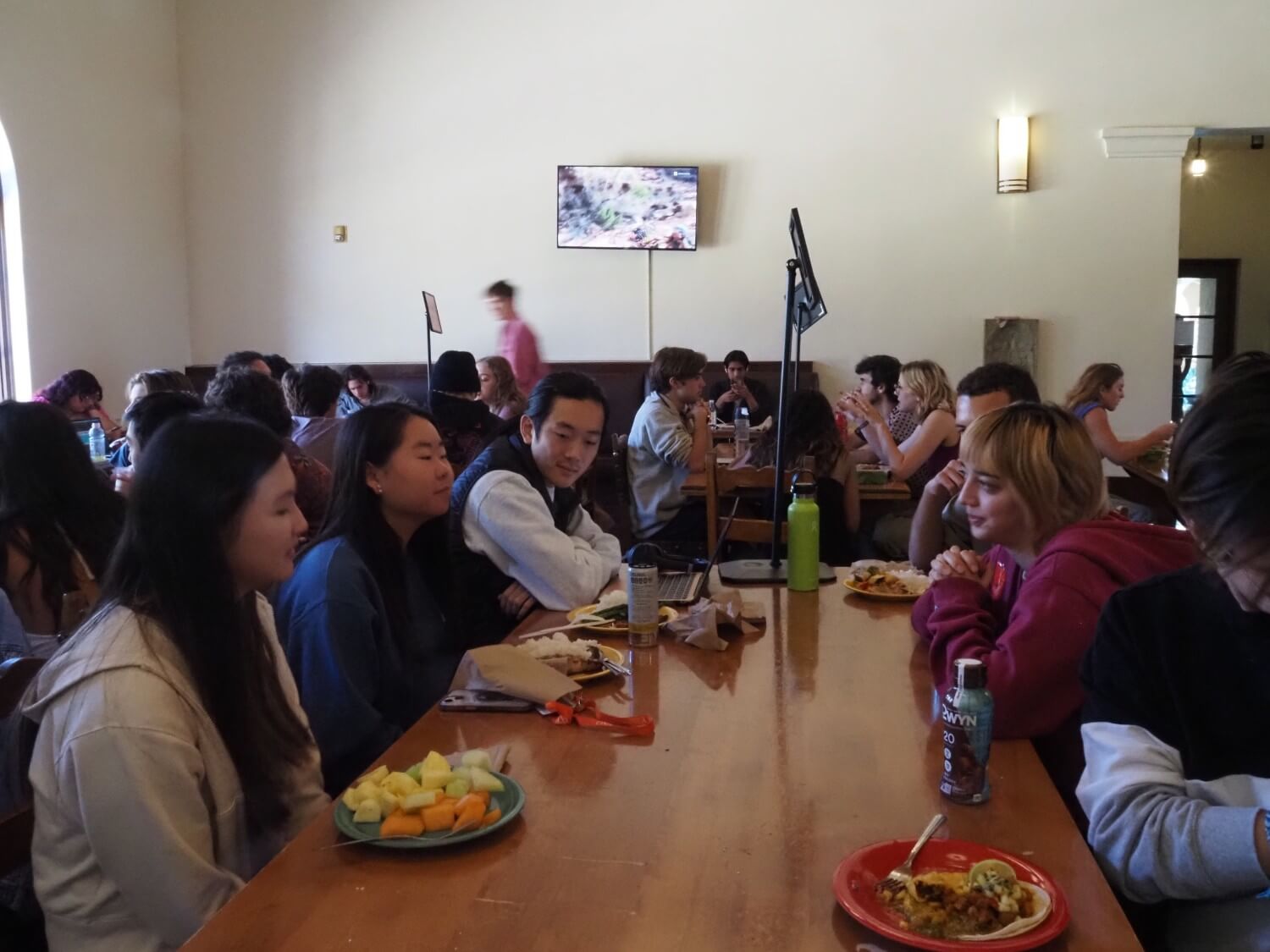
The Language Tables program launched Oct. 4 to expand foreign language learning on campus, according to Luz Forero ‘98, the specialist for language education and an affiliated instructor in Spanish & French Studies. Every Wednesday from 12:30-1:30 p.m. in the Marketplace, students, faculty and staff have the opportunity to sit down at one of the tables and converse with peers in a foreign language.
According to Forero, language tables are a great way to practice language skills and enhance learning through casual conversation, a context different from the classroom.
“It sharpens your listening comprehension skills and your speaking skills — that’s the educational part,” Forero said. “Beyond that, [it is] psychologically effective, it lowers your affective filter which means it makes people more comfortable to be exposed to the language when they’re hearing different people speak.”
There are currently six languages represented at the Wednesday language tables, according to Forero: French, Spanish, Russian, Mandarin, German and Japanese. Forero said there are personal and professional benefits to learning foreign languages like these.
“When you have a passion about a culture and language, and you’re able to express that with friends and joke in the language… it creates a stronger basis for friendship and lifelong relationships,” Forero said. “It’s not just students in [Diplomacy and World Affairs] who will [need] to be well-versed in other cultures and languages. In almost every discipline, it’s very useful to be aware and have that multifaceted understanding of the world.”

According to Forero, faculty and staff also participate in the language tables. Forero said that this dynamic is beneficial, as students can learn alongside their professors.
“Students can see their biology professor or their physics professor also learning a language and maybe hesitating sometimes and being shy about speaking [the language],” Forero said. “When [students] can see someone they respect and admire also being challenged, that helps.”
James Brammer (sophomore) said he attends one of the two Spanish tables and has enjoyed the opportunity to practice the language.
“I think I’ve greatly improved my conversational abilities through the language tables,” Brammer said. “People also have different dialects — we have a lot of different dialects in the table and to hear those different accents and learn those kinds of dialects is really interesting.”
Brammer said he has a deep appreciation for the Spanish language, and he likes bringing language learning outside the classroom environment.

“I think language is just a beautiful thing,” Brammer said. “And it’s such a cool experience to be able to have all these different languages in a casual conversational setting.”
Josue Solis (senior), a bilingual Spanish speaker, said he feels he doesn’t have enough chances to speak and practice Spanish, which is where the language tables come in.
“The practice is good, that’s what it’s all about — practicing Spanish,” Solis said. “I’d say [the language tables] definitely helped me become more comfortable.”
Solis said he did not seek out the language tables, but rather they came to him — literally.
“I always eat lunch at the same table. And one day, someone just came and put down one of [the table signs] so I just stayed long enough and the student-teachers came, and they started speaking Spanish,” Solis said. “I’ve just stayed ever since, [and] I’ve been here every week.”
According to Solis, the Spanish tables are very welcoming to a wide range of speakers.
“There is definitely a lot of diversity and different levels of Spanish speaking, but I’d say that helps,” Solid said. “The people who are not as good at Spanish are improving the most, even if they might not be speaking the most Spanish, they definitely do catch on, and it helps them feel more comfortable.”
Ethan Kerman (junior) is the language leader for Mandarin at the language tables and said the language tables have been very beneficial so far.

“It’s been actually really great. I’ve been kind of surprised by how overwhelmingly positive the experience has been,” Kerman said. “It’s really cool getting lots of different levels of language — everyone can help each other out.”
Kerman said the language tables are uniquely valuable in making in-class language studies practical for daily conversation and life.
“Class can give you a lot. You learn words [and] how to answer questions, but having conversations is a skill that you really need to develop on its own, and this is a great way to do it,” Kerman said. “I’m studying abroad next semester, so I feel like it’s really preparing me to go to China and have conversations all the time.”
Kerman said he has been learning Mandarin for about 16 years, a background he brings to the language tables to help other learners.
“I know what it’s like to learn Chinese as a second language, and even though I’ve been learning it for a really long time, it’s given me a lot of perspective into the best ways to learn it, how to best study it and what’s hardest for most people,” Kerman said.
Forero said she views the languages tables as a pilot project at the moment, and that they’re gathering data to see how to move forward in the future. She said she has high hopes for the program and hopes it can grow to include more languages, as well as occur more frequently.
“I see a possibility of Armenian or maybe African languages in the future,” Forero said.
Forero said the language tables bring in a larger community aspect as well, where new connections and friendships can occur.
“Oxy is all about [community] — and to have people together that otherwise wouldn’t have a conversation in that language without the tables — to me that’s so exciting to see,” Forero said. “People from different corners of the campus come together and have a conversation over a meal, I mean that’s always great.”
Contact Julian Villa at jvilla@oxy.edu
![]()


































